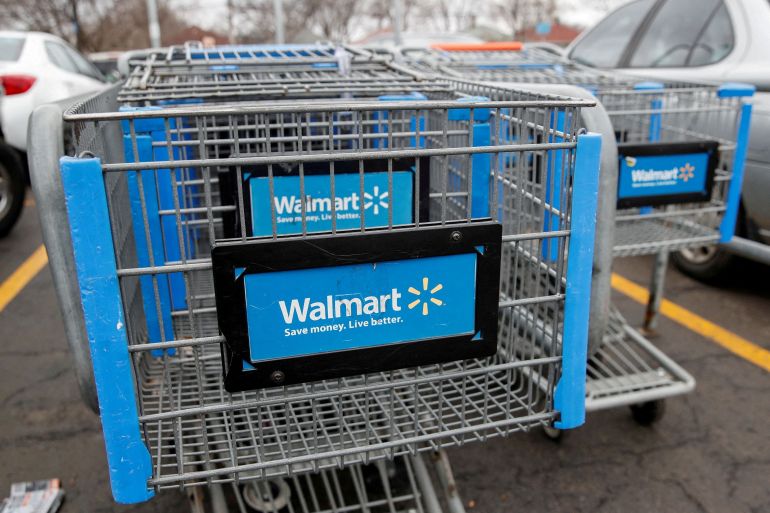Largest US retailer Walmart warns of price hikes because of tariffs

Quick Read
Largest US retailer Walmart warns of price hikes because of tariffs
# Walmart Warns of Price Increases as Tariffs Loom: What Shoppers Need to Know
## Introduction
American shoppers may soon feel the pinch at the checkout line as Walmart, the nation’s largest retailer, signals impending price hikes due to escalating tariffs. The retail giant has joined a growing chorus of businesses warning that increased import taxes on goods from China could lead to higher costs for everyday products—from electronics to household essentials.
With trade tensions between the U.S. and China intensifying, Walmart’s announcement raises concerns about the broader impact on consumer spending and the economy. Here’s what you need to know about the looming price changes and how they might affect your wallet.
## Why Walmart is Sounding the Alarm
### The Tariff Effect
The latest wave of U.S. tariffs on Chinese imports—ranging from consumer electronics to clothing—has forced major retailers to reassess their pricing strategies. Walmart, which sources a significant portion of its merchandise from China, has indicated that absorbing these additional costs indefinitely is unsustainable.
While the company has worked to mitigate price increases through supply chain adjustments and negotiations with suppliers, executives have acknowledged that some of the financial burden will inevitably be passed on to consumers.
### A Broader Retail Trend
Walmart isn’t alone in this predicament. Competitors like Target and Amazon have also hinted at potential price adjustments in response to tariffs. However, Walmart’s sheer size and influence make its warnings particularly noteworthy. As a bellwether for the retail industry, its pricing shifts often set trends that smaller retailers follow.
## Which Products Could See Price Increases?
While Walmart has not specified exact items that will become more expensive, analysts predict the following categories are most vulnerable:
- **Electronics** – TVs, smartphones, and accessories, many of which are manufactured in China.
- **Apparel & Footwear** – Clothing and shoes, which already face high tariff rates.
- **Home Goods** – Furniture, kitchenware, and decor items.
- **Toys & Seasonal Items** – A significant portion of toys sold in the U.S. are imported from China.
Walmart has emphasized that it will strive to keep prices low by leveraging its massive buying power, but some increases appear unavoidable.
## How Shoppers Can Prepare
### Smart Shopping Strategies
With price hikes on the horizon, consumers may need to adjust their shopping habits. Here are a few ways to stay ahead:
1. **Stock Up on Staples** – If certain non-perishable items are likely to rise in price, buying in bulk now could save money later.
2. **Look for Discounts & Promotions** – Walmart and other retailers may offer sales to offset customer concerns.
3. **Consider Store Brands** – Walmart’s private-label products (like Great Value and Equate) often provide better value than name brands.
4. **Monitor Price Trends** – Using price-tracking tools or apps can help shoppers spot the best deals.
### The Bigger Economic Picture
Beyond individual budgets, Walmart’s warning reflects broader economic pressures. Rising retail prices could dampen consumer spending, which drives nearly 70% of the U.S. economy. If other businesses follow suit, inflation concerns may grow, potentially influencing Federal Reserve policy and economic forecasts.
## What’s Next for Walmart and Retail?
### Potential Supply Chain Shifts
To reduce reliance on Chinese imports, Walmart and other retailers are exploring alternative manufacturing hubs, including Vietnam, India, and Mexico. However, transitioning supply chains is a complex, long-term process—meaning tariffs will likely impact pricing for the foreseeable future.
### Political and Public Reaction
The retail industry has been vocal in opposing additional tariffs, lobbying the U.S. government to reconsider trade policies. How policymakers respond could determine whether price increases are a short-term inconvenience or a prolonged challenge for consumers.
## Conclusion
Walmart’s price hike warning serves as a reality check for shoppers: the ripple effects of U.S.-China trade tensions are reaching store shelves. While the retail giant will do its best to minimize the impact, budget-conscious consumers should stay informed and adapt their shopping strategies accordingly.
As the situation evolves, *Noyzy News* will continue to track how tariffs reshape the retail landscape—and what it means for your everyday spending. Stay tuned for updates.
---
*What do you think about the potential price increases? Will you change how you shop at Walmart? Share your thoughts in the comments below!*






